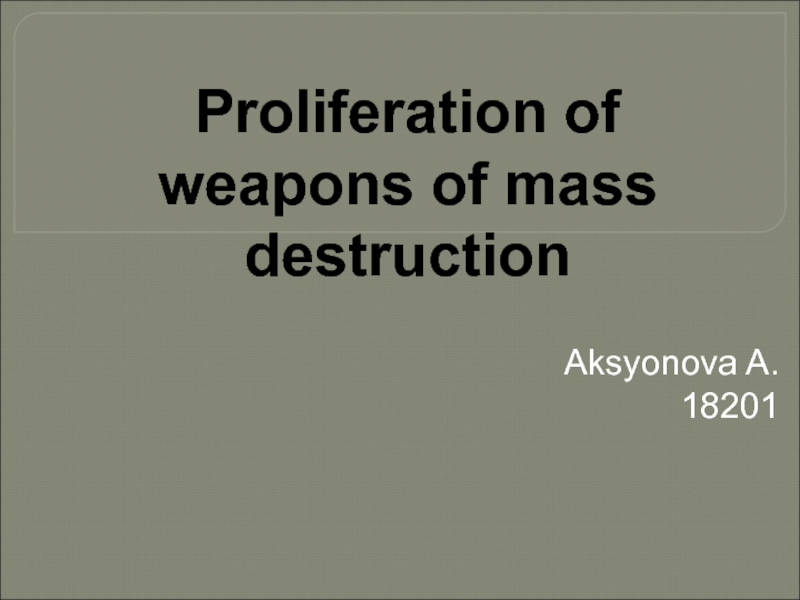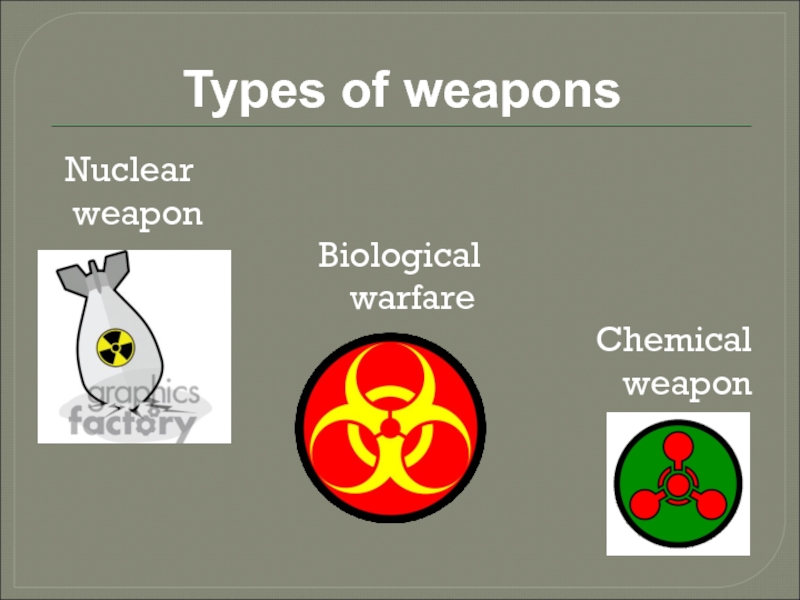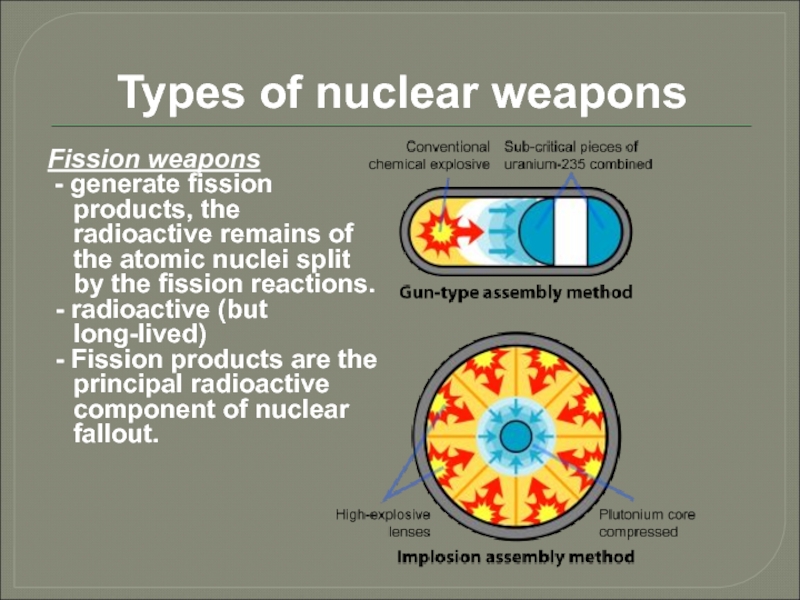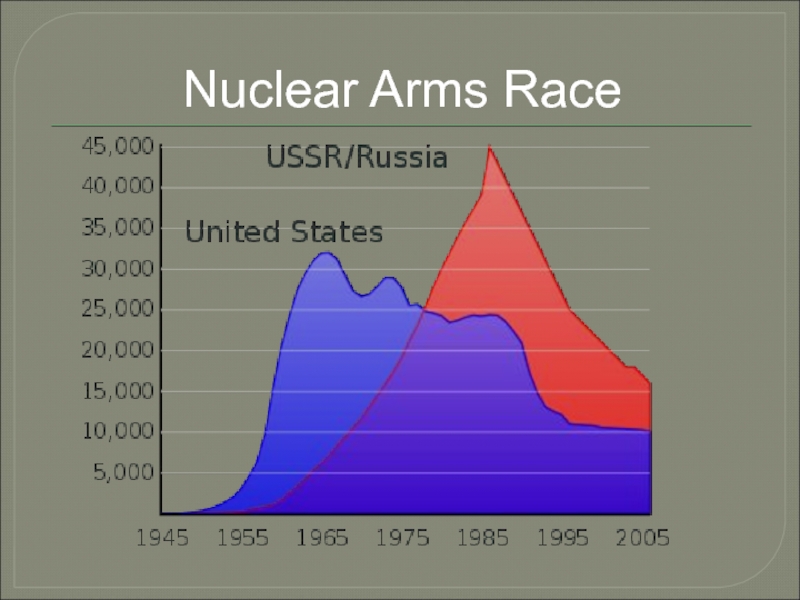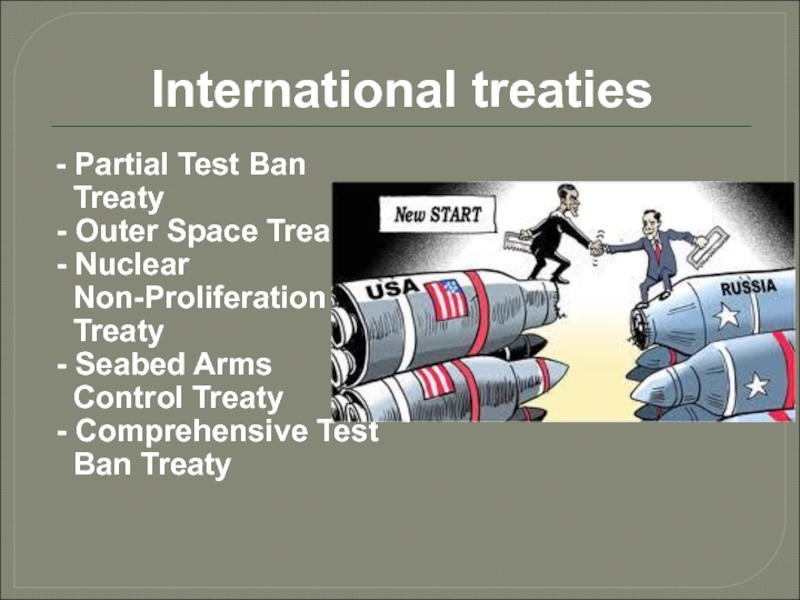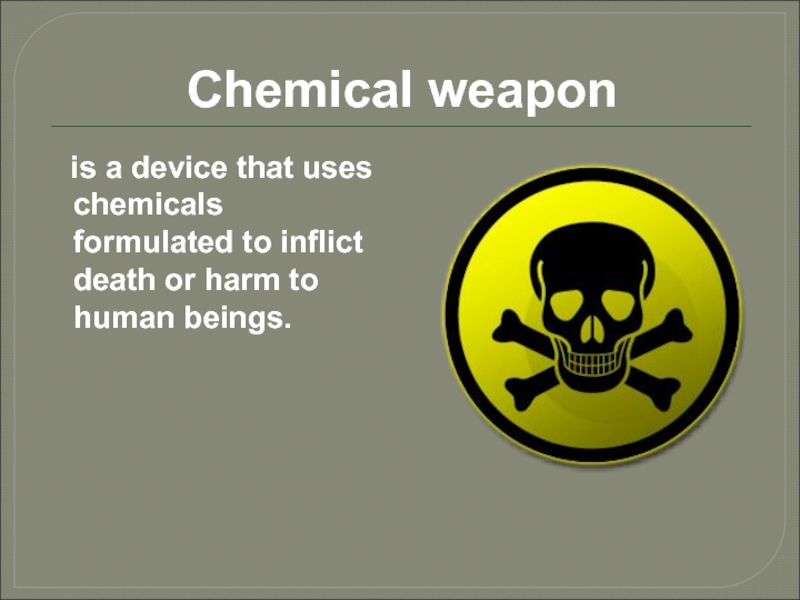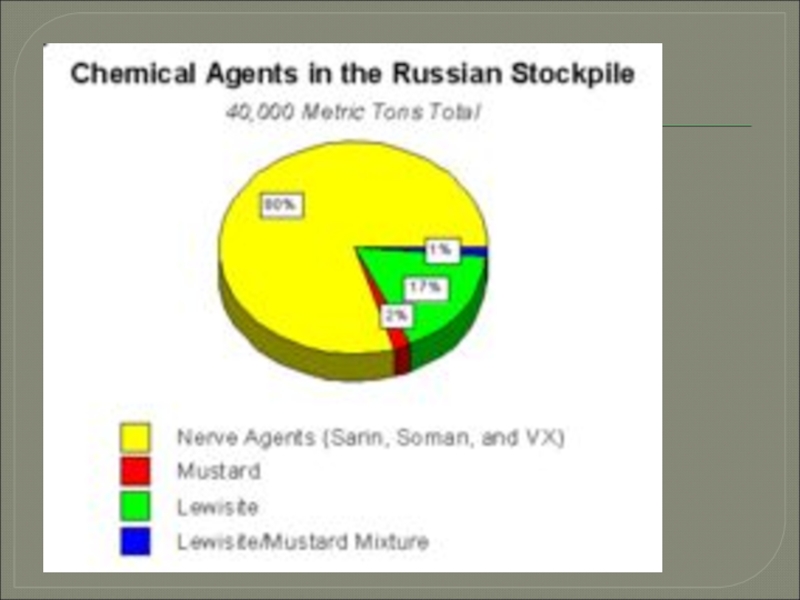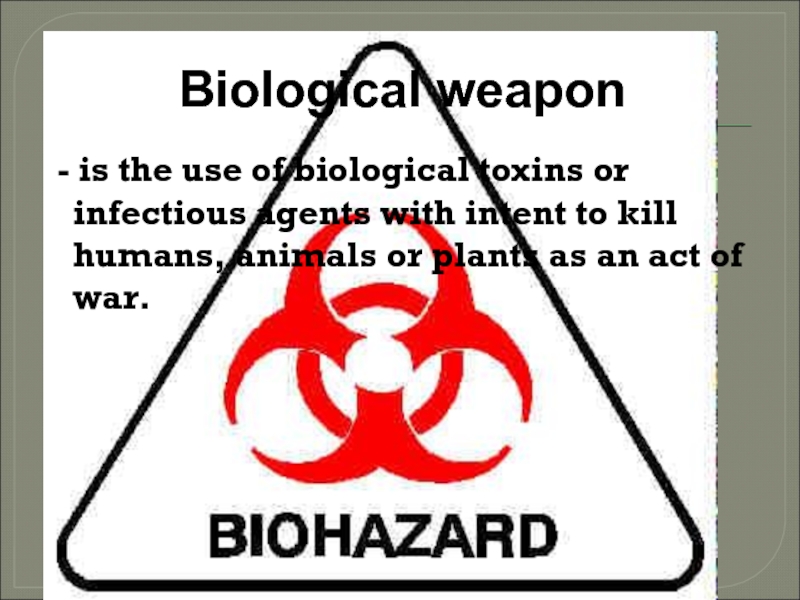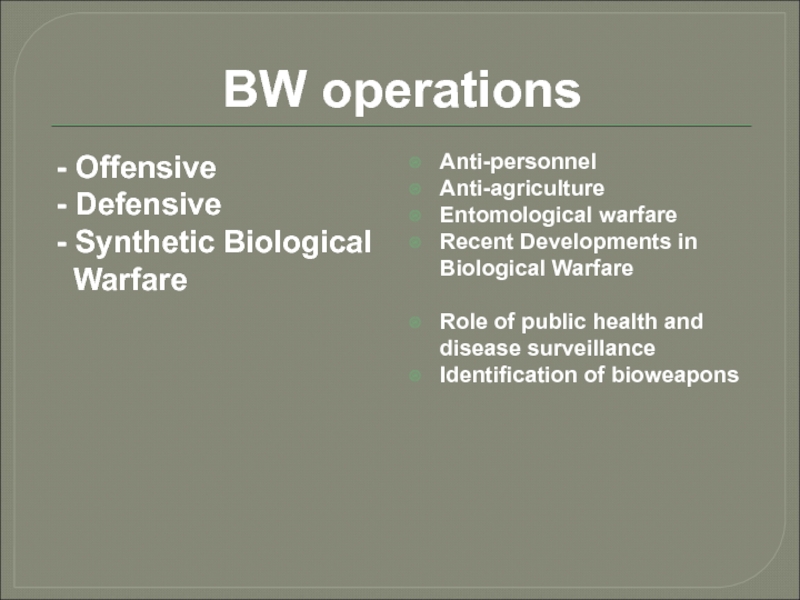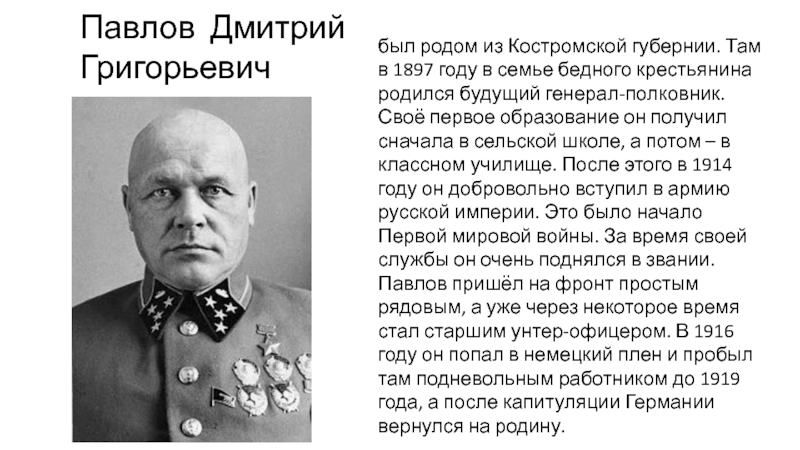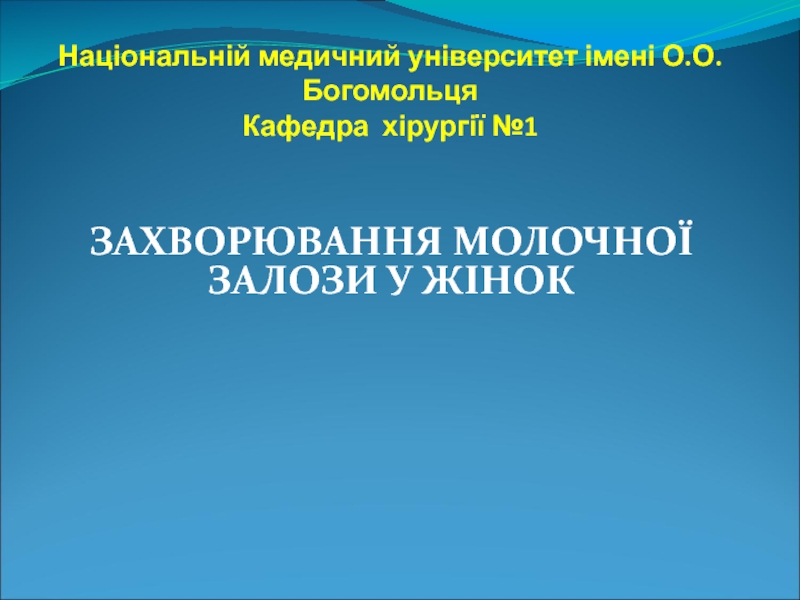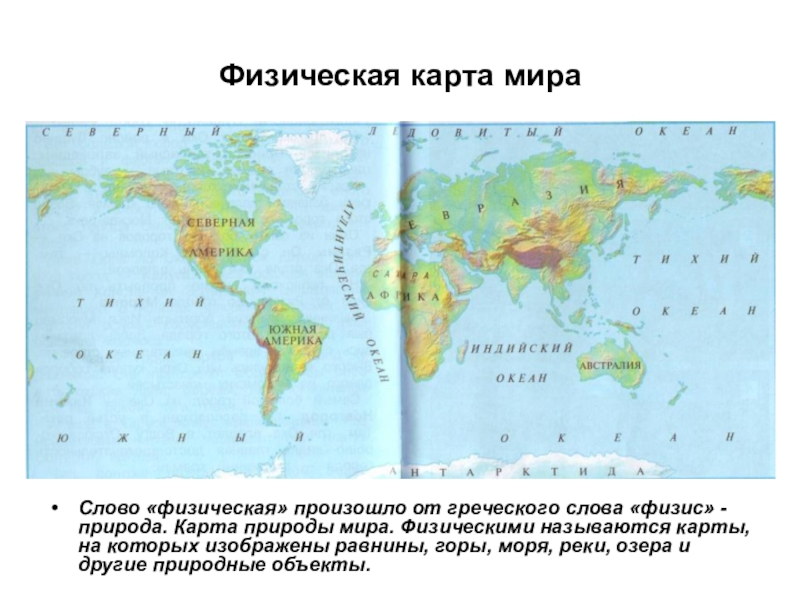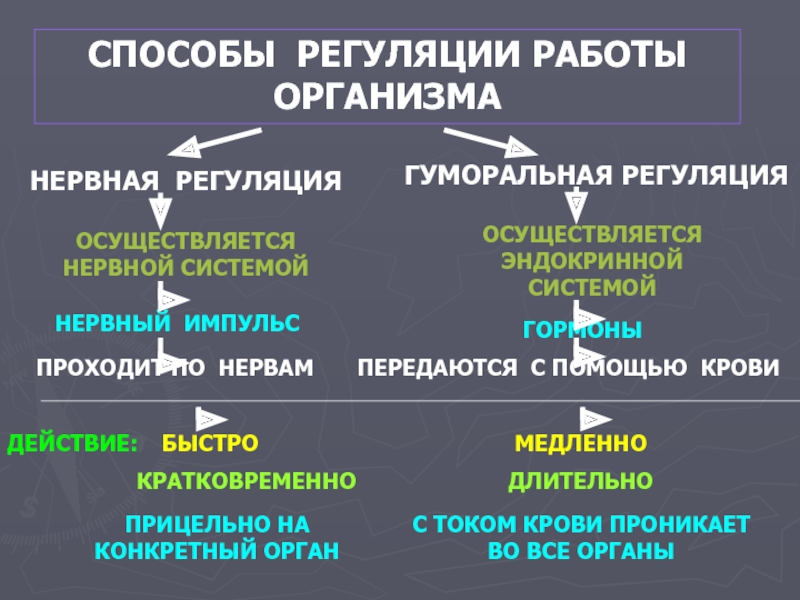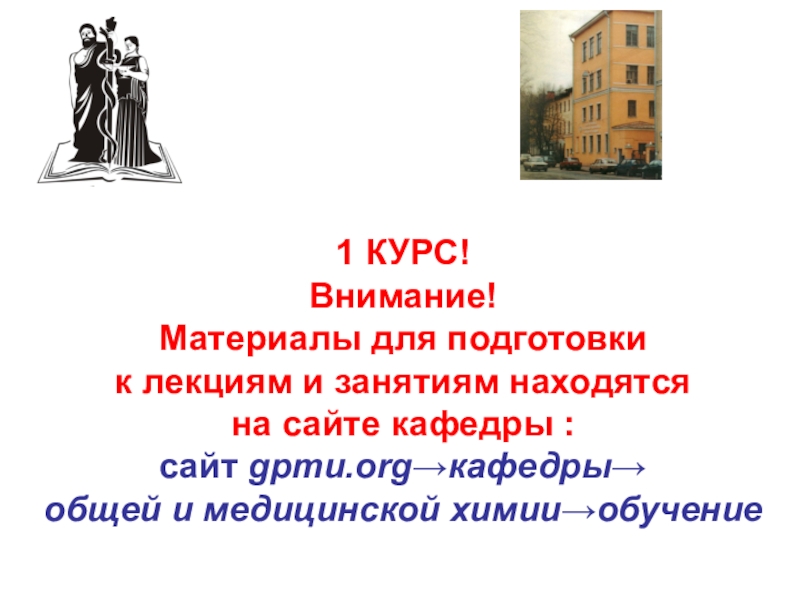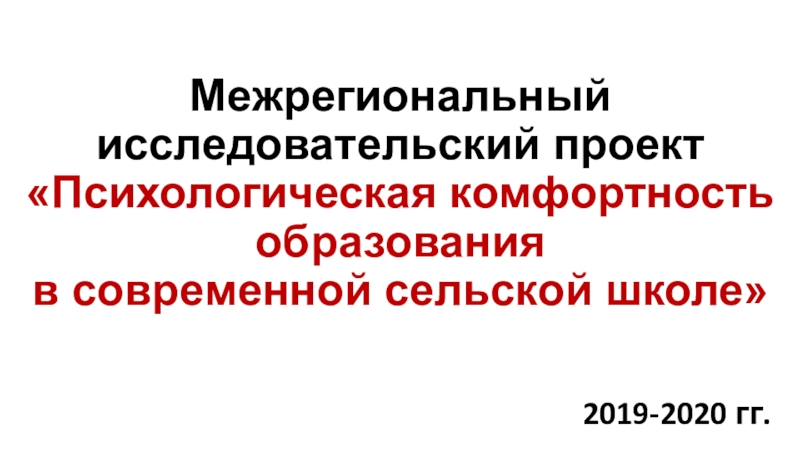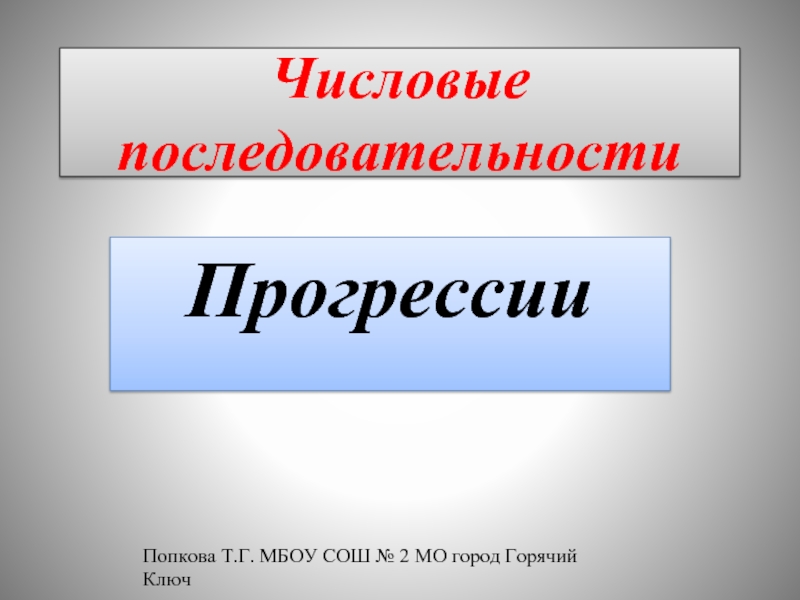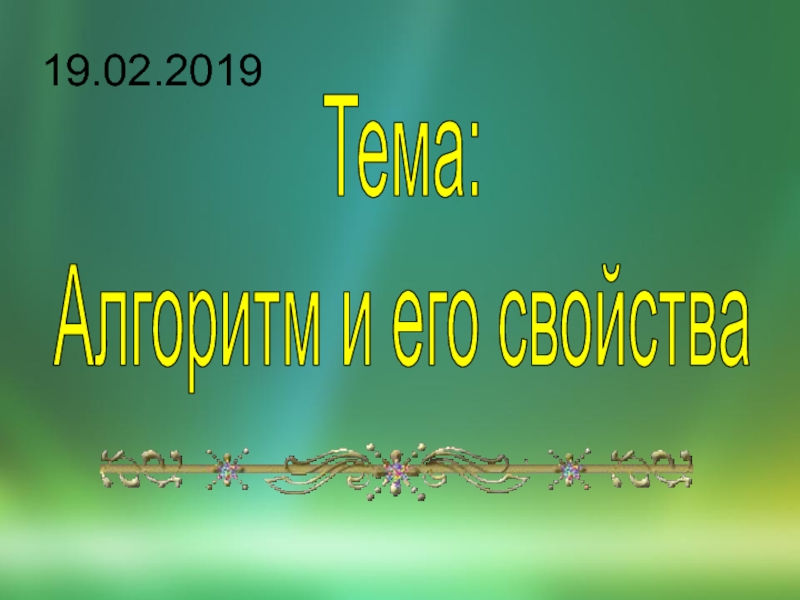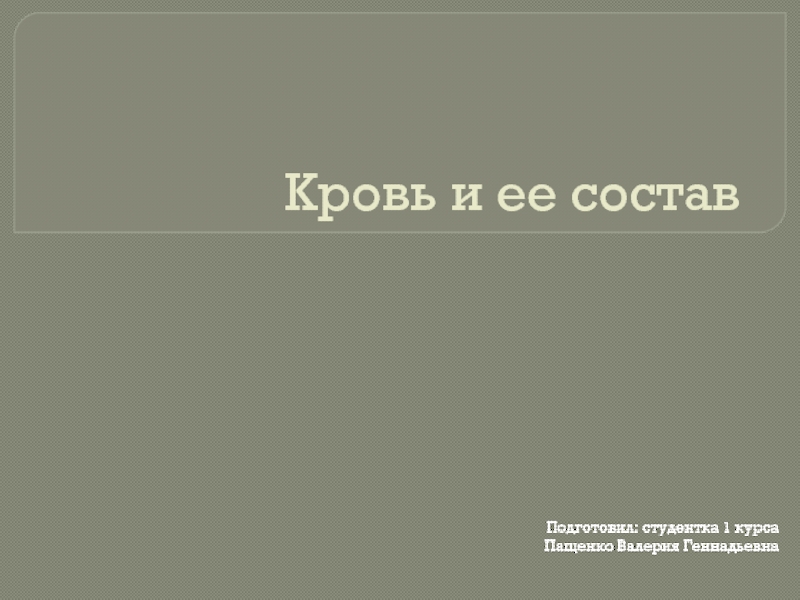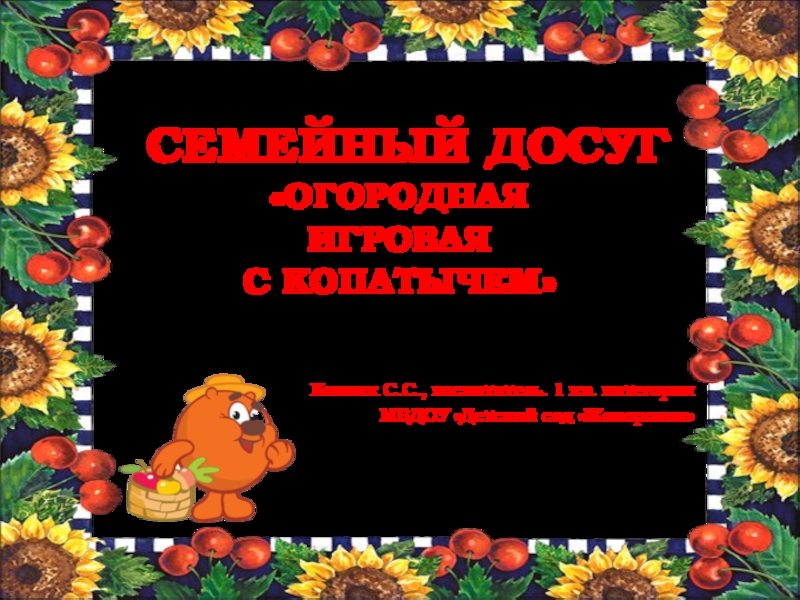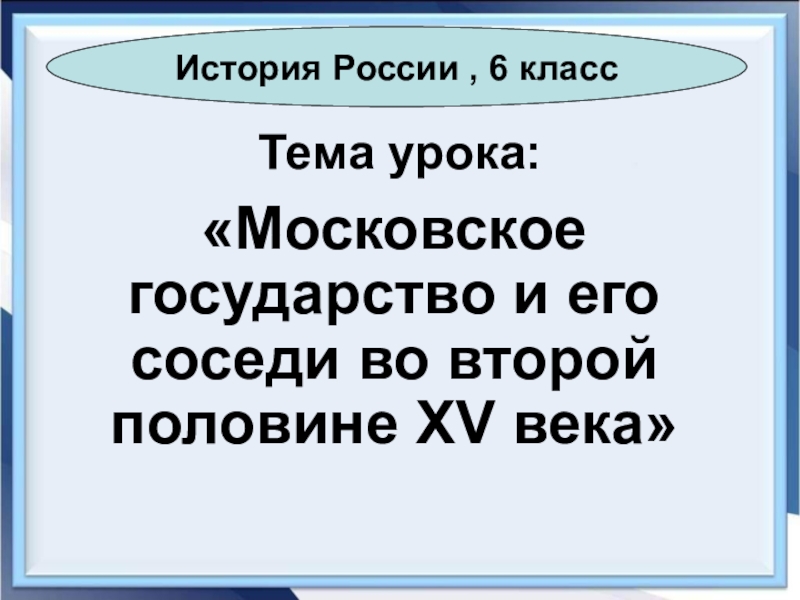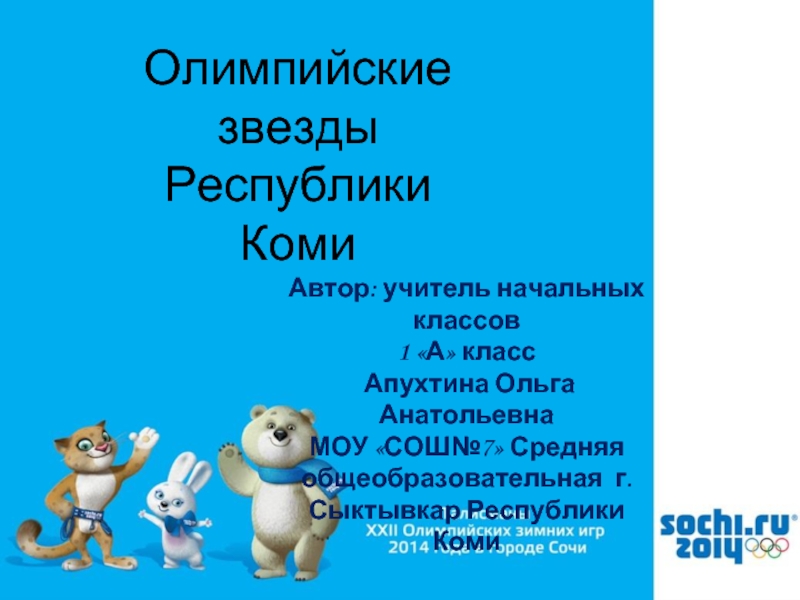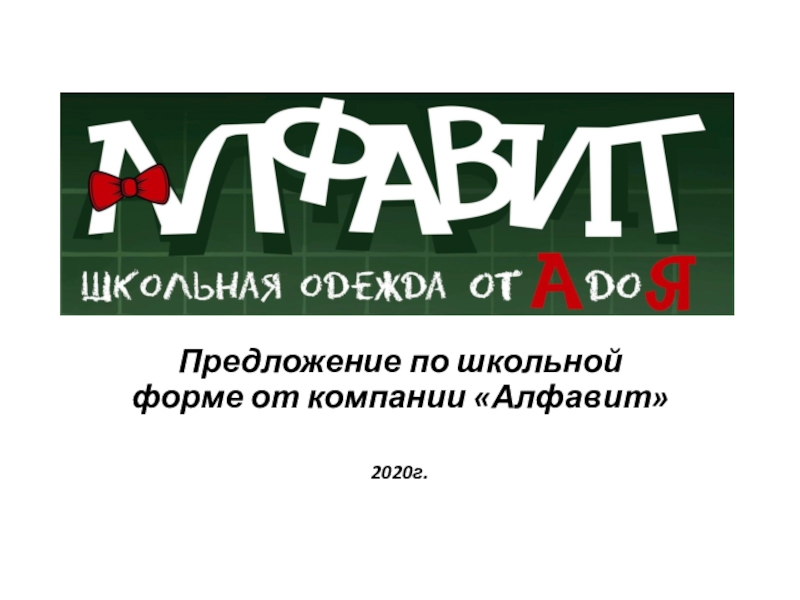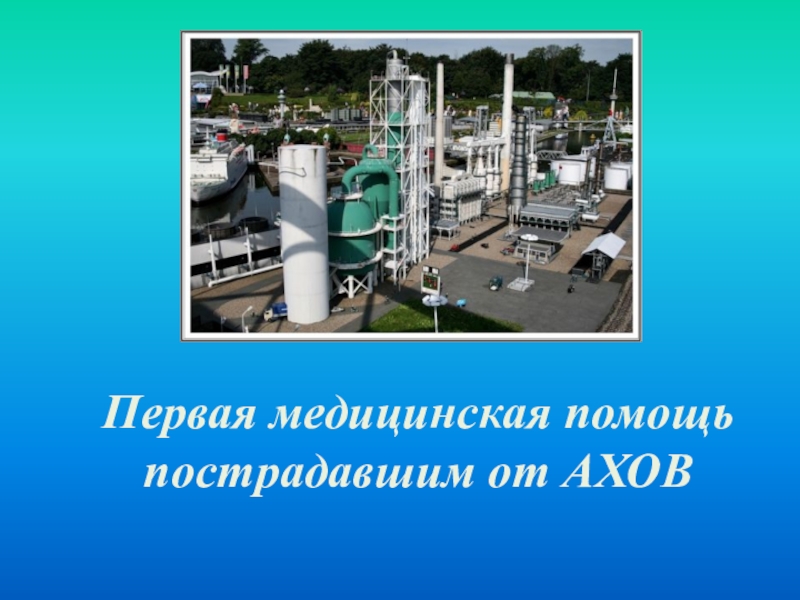Разделы презентаций
- Разное
- Английский язык
- Астрономия
- Алгебра
- Биология
- География
- Геометрия
- Детские презентации
- Информатика
- История
- Литература
- Математика
- Медицина
- Менеджмент
- Музыка
- МХК
- Немецкий язык
- ОБЖ
- Обществознание
- Окружающий мир
- Педагогика
- Русский язык
- Технология
- Физика
- Философия
- Химия
- Шаблоны, картинки для презентаций
- Экология
- Экономика
- Юриспруденция
Proliferation of weapons of mass destruction
Содержание
- 1. Proliferation of weapons of mass destruction
- 2. ContentsDefinition. TypesNuclear weaponChemical weaponBiological weaponPublic perceptions of WMD
- 3. A weapon of mass destruction
- 4. Types of weapons Nuclear weaponBiological warfareChemical weapon
- 5. Nuclear weapon A nuclear weapon is
- 6. Types of nuclear weaponsFission weapons - generate
- 7. Fusion weapons - produces a large amount
- 8. Nuclear Arms Race
- 9. Слайд 9
- 10. International treaties - Partial Test Ban Treaty
- 11. Chemical weapon is a device that
- 12. Слайд 12
- 13. Слайд 13
- 14. TreatiesGeneva ProtocolWashington Naval TreatyChemical Weapons ConventionThe OPCW
- 15. Biological weapon - is the use of
- 16. BW operations - Offensive - Defensive -
- 17. Thank you for your attention
- 18. Скачать презентанцию
ContentsDefinition. TypesNuclear weaponChemical weaponBiological weaponPublic perceptions of WMD
Слайды и текст этой презентации
Слайд 2Contents
Definition.
Types
Nuclear
weapon
Chemical weapon
Biological weapon
Public perceptions of WMD
Слайд 5Nuclear weapon
A nuclear weapon is an explosive device
that derives its destructive force from nuclear reactions, either fission
or a combination of fission and fusion.Слайд 6Types of nuclear weapons
Fission weapons
- generate fission products, the
radioactive remains of the atomic nuclei split by the fission
reactions.- radioactive (but long-lived)
- Fission products are the principal radioactive component of nuclear fallout.
Слайд 7Fusion weapons
- produces a large amount of its energy
through nuclear fusion reactions
- fusion reactions can themselves trigger
additional fission reactionsСлайд 10International treaties
- Partial Test Ban Treaty
- Outer Space
Treaty
- Nuclear Non-Proliferation Treaty
- Seabed Arms Control Treaty
- Comprehensive Test Ban TreatyСлайд 11Chemical weapon
is a device that uses chemicals formulated
to inflict death or harm to human beings.
Слайд 15Biological weapon
- is the use of biological toxins or
infectious agents with intent to kill humans, animals or plants
as an act of war.Слайд 16BW operations
- Offensive
- Defensive
- Synthetic Biological Warfare
Anti-personnel
Anti-agriculture
Entomological
warfare
Recent Developments in Biological Warfare
Role of public health and disease
surveillanceIdentification of bioweapons
